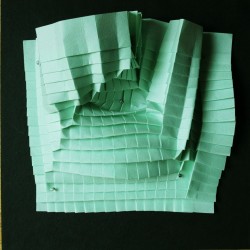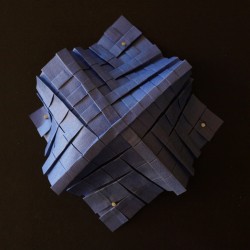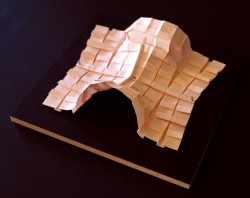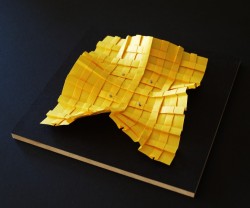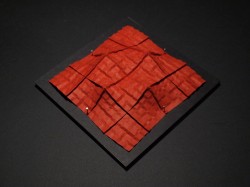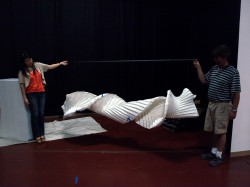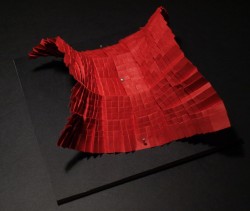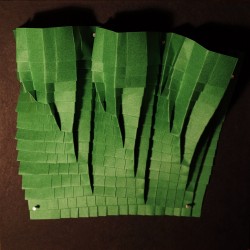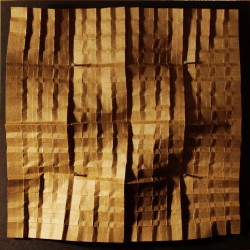10 (6/22): Opening 2
June 24, 2011
9 (6/21): Box pleat wave
June 23, 2011
8 (6/20): Inverse hierarchical
June 23, 2011
7 (6/19): Hierarchical
June 23, 2011
6 (6/18): Unfolded 2
June 20, 2011
5 (6/17): Twist
June 20, 2011
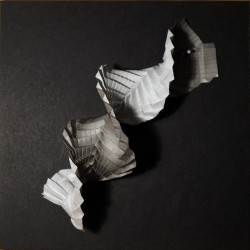
Unlike the first four, this was not folded from a square, but a long rectangle with corners cut off (which makes it a hexagon). Also, it is from “standard” origami paper which has two different-colored sides. As with all other 50-50 pieces, the background is a 6 by 6 inch square. For an experience of a completely different scale, I’m including a photo of a similar twist folded from a sheet (of watercolor paper) that was about 23 feet long and 5 feet wide. The large twist was folded for an origami exhibit at this year’s Marin County Fair.
4 (6/16): Saddle Surface
June 19, 2011
3 (6/15): Opening
June 19, 2011
2 (6/14): Unfolded
June 19, 2011
1 (6/13): Wave
June 18, 2011
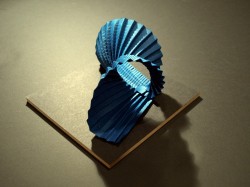 Unlike last year, the title I’ve chosen defines an approach, rather than a subject. Pinned paper includes all works whose appearance and character critically depends on the choice of points at which they are attached to the background. This wave would not maintain its shape without nails that pin it to the background panel.
Unlike last year, the title I’ve chosen defines an approach, rather than a subject. Pinned paper includes all works whose appearance and character critically depends on the choice of points at which they are attached to the background. This wave would not maintain its shape without nails that pin it to the background panel.
